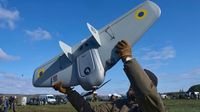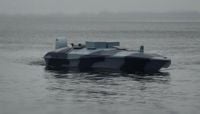In a world where warfare is no longer contained by borders or defined by tanks and troops alone, the battlefields of the 21st century are as likely to be digital as physical—and sometimes both at once. The past year has seen the Russia-Ukraine conflict transform into a proving ground for new forms of decentralized and autonomous warfare, with ramifications stretching far beyond Eastern Europe. NATO, Western governments, and their adversaries are all watching—and adapting—in real time.
At the NATO Summit earlier this summer, alliance members agreed to a significant boost in defense spending, aiming for 5% of GDP, and reaffirmed their Article 5 commitments. This move, reported by Fortune, signals a recognition that the very definition of "defense" is evolving. No longer is it enough to count tanks and jets; cybersecurity, technological innovation, and resilience of critical infrastructure have become existential priorities. As the U.S. encourages Europe and the UK to become more self-reliant, the imperative for investment in defense innovation is clear—and urgent.
Why such urgency? The answer lies in the rapidly shifting tactics on the ground and in the ether. Ukrainian officials reported a dramatic surge in Russian cyber-attacks in 2024, with incidents up 70% compared to the previous year. More than half of these targeted government systems, and there was a sharp increase in attacks aimed at military command and control infrastructure. These aren’t isolated incidents. Across the West, critical national infrastructure—energy grids, gas pipelines, undersea cables—has become a prime target for cybercriminals, hacktivists, and state actors alike. As Fortune notes, a successful attack on a server farm or a substation can be as devastating as a missile strike, making digital defense as vital as physical protection.
But the cyber domain is only part of the story. On the physical battlefield, unmanned and autonomous systems—once the stuff of science fiction—are now central to warfighting. Drones, both in the air and on the ground, have become force multipliers, allowing Ukraine to offset Russia’s advantages in sheer numbers and firepower. According to The National Interest, Ukraine has leaned heavily on inexpensive first-person-view (FPV) drones and unmanned ground vehicles (UGVs), aiming to produce several million FPV drones and field over 15,000 ground robots by the end of 2025. These machines are not just tools; they’re reshaping the very calculus of war.
The impact of these systems has been dramatic. In March 2025, Ukraine launched its largest ever drone attack, sending 343 drones into the Moscow region and forcing the shutdown of all four of the Russian capital’s airports. Just a few months later, in June, Ukraine’s “Operation Spider’s Web” saw more than 100 drones deployed deep within Russian territory, striking airbases as far as 4,500 kilometers from the border. These were not expensive cruise missiles or stealth jets, but swarms of relatively cheap UAVs launched from mobile trucks—proving that technological innovation can level the playing field against a larger adversary.
“Ukraine’s adaptation to robotics is accelerating,” said Serhii Kuzan, chairman of the Ukrainian Security and Cooperation Center and former Ministry of Defense adviser, as quoted by The National Interest. Yet, as Ukraine innovates, so too does Russia. The Kremlin has not only scaled up drone production—at times launching over 700 in a single night by July 2025—but has also expanded domestic manufacturing of Iranian-designed Shahed drones, sharing technology with North Korea, China, and Iran. The night of September 6 to 7, 2025, saw Russia launch its largest combined drone and missile strike against Ukraine to date, with 823 total projectiles, according to the Institute for the Study of War.
This technological arms race isn’t limited to the air. In August 2025, Russia used a naval drone to strike a Ukrainian Navy reconnaissance ship for the first time. On the ground, both sides are experimenting with UGVs—ranging from crude supply vehicles to advanced, weaponized platforms. “The Russian defense industry so far has not demonstrated the full weight of its potential in UGV production,” observed Samuel Bendett, an adjunct senior fellow at the Center for a New American Security. However, the pace of development is quickening, with lessons rapidly shared among Russia’s partners.
The “Axis of Evil”—or as some call it, the “Axis of Upheaval”—is pooling expertise, with Venezuela fielding Iranian-designed drones, North Korea receiving Russian and Iranian support, and Chinese components found in downed Russian UAVs. Thousands of North Korean troops have reportedly fought alongside Russian forces, and Chinese nationals have been documented working in Russian drone facilities. “The Russians have also shared what they have learned with the North Koreans, the Chinese, and the Iranians,” said retired Australian Army Major-General Mick Ryan, highlighting the global nature of this technological convergence.
For Ukraine, the stakes couldn’t be higher. As Robert “Madyar” Brovdi, Ukraine’s new drone boss, remarked after visiting a NATO base, “Without coming closer than 10 kilometers, four crews of Ukrainian drone pilots could have turned that place into another Pearl Harbor in just 15 minutes. I’m not saying this to scare anyone—only to point out that these technologies are now so accessible and cheap.”
Yet, as The National Interest reports, the West has been hesitant to fully engage with Ukraine on the tactical and technological lessons of this war, wary of provoking Russia. This caution may come at a cost. “Traditional models of land warfare are now largely obsolete,” said Ryan. “Ukraine remains the West’s best source of hard-won insights into how these systems can be developed, deployed, and countered,” added Deborah Fairlamb, founding partner of Green Flag Ventures.
One clear lesson is the speed of innovation. In 2022, new battlefield technologies lasted about seven months before being replaced. By early 2025, the cycle had shortened to just four to six weeks. Wars, it seems, are the ultimate accelerators of technological progress—but innovation alone isn’t enough. As Vitaliy Goncharuk, CEO of A19Lab, put it, “Innovation matters over a one-to-three-year horizon, but it isn’t an end in itself—because innovative solutions cannot be scaled in just a few months.”
Europe, together with Ukraine, is beginning to seize the opportunity. In September, Ukraine launched its first joint drone production line in Denmark. Oleksandra Ustinova, a Ukrainian member of parliament, called it a “win-win,” saying, “They get access to Ukrainian innovation and production capacity, while we get foreign investment and political support from their governments.”
The UK, for its part, has established joint military-industry task forces to harden energy infrastructure and is investing in rapid restoration capabilities for communications networks. As Fortune points out, the lines between military and civilian defense are blurring, with resilience across the economy now a core part of national security strategy.
As the age of decentralized and hybrid warfare dawns, the West faces a stark choice: adapt quickly or risk falling behind. The battles of tomorrow will be fought with algorithms and autonomy as much as with armor and artillery. The lessons of Ukraine—hard-earned and ongoing—may well determine who prevails.






